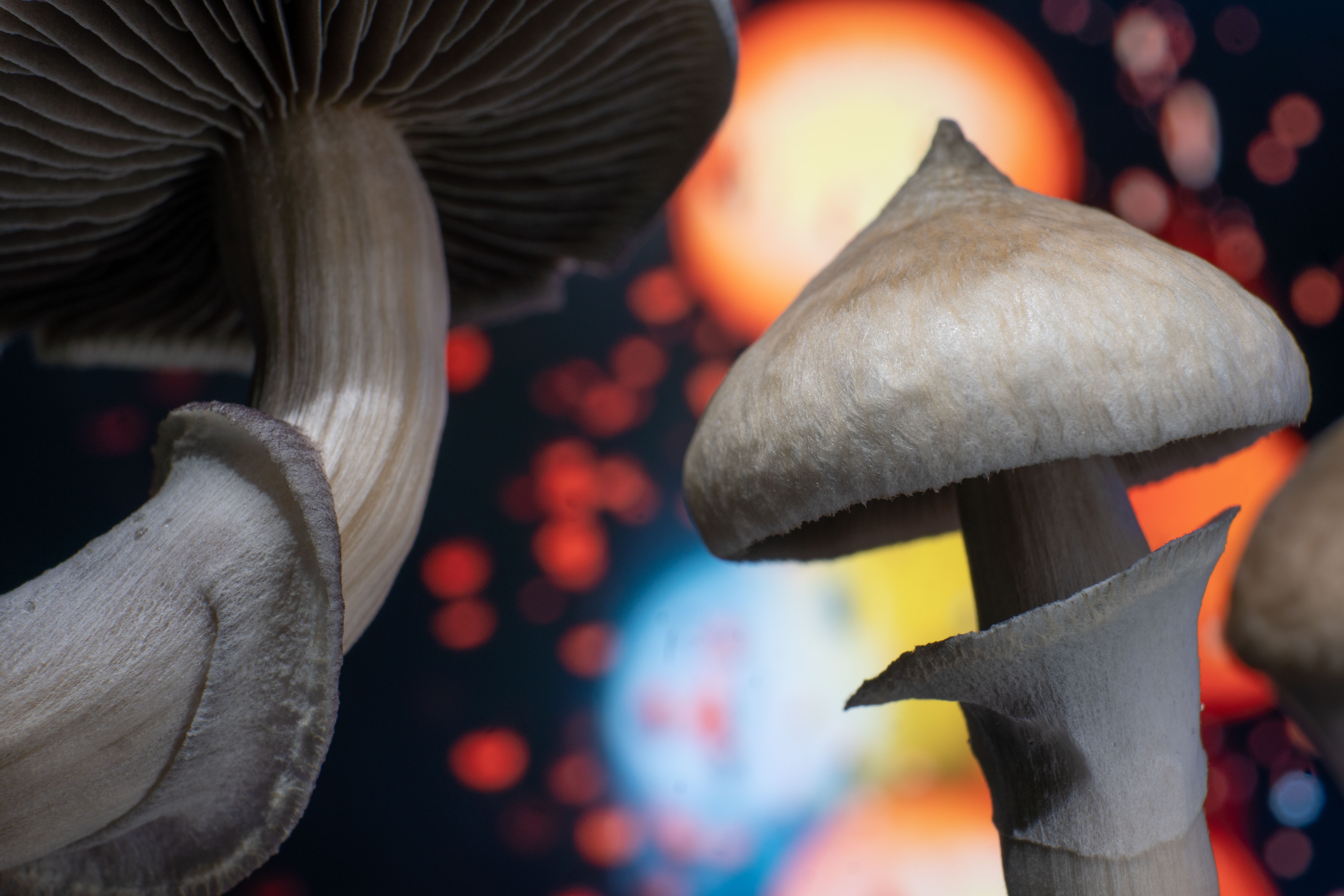And you thought cannabis was progressive?
“Magic mushrooms” make their debut in the progressive veterinary field as potential therapy for canines suffering from extreme anxiety, posttraumatic stress disorder, or other behavioral conditions.
It’s been about 4 years since the cannabis discussion became polarized in veterinary medicine, with the lingering controversy of safety, efficacy, and legality.
Well, you better get ready folks because what is next on the horizon may make you cringe, or fly, or experience ghosts of the past, present, and future. That’s only, of course, if you take this next “big” natural product.
If you haven’t guessed it yet, I am talking about psilocybin (aka, “magic”) mushrooms. Yes, veterinary community, get ready. Although this mushroom is still a schedule 1 drug on federal and state levels, 3 American cities have already decriminalized the psychedelic fungi, and integrative and holistic-minded veterinarians are quietly using the mind-bending buttons (a term used for the caps of the mushrooms) in practice today. Popularity may increase more with the success of the new Netflix show “Fantastic Fungi”, which I highly recommend. In fact, a handful of veterinary working groups are already discussing how to destigmatize—and prepare for yet another battle for mainstream acceptance over the utility of—the ancient therapy used by Mesoamerican people throughout history.
The big issue here besides legality is research. When cannabis became the hot topic, we were faced with the myth of “there is no research,” even though there’s plenty (eg, literature in lab animal species, including cats and dogs and now clinical studies). When it comes to psychedelic mushrooms, on the other hand, we aren’t as fortunate. In the 1960s through the early 1970s, researchers began to investigate the compounds in psilocybin on dogs specifically.2,3 However, this was halted due to the rapidly changing and more conservative approach to America’s “drug culture” at the time. Since then, we have only seen research or case studies with toxicity to shrooms, ignoring the therapeutic potential.
Although modern research is lacking because of its regulatory status, this has never stymied innovation, personal use, or in this case, the use on veterinary patients with strong client rapport.
So how are these progressive veterinarians incorporating the controversial mushies? At present, psilocybin is being used for dogs with extreme anxiety, posttraumatic stress disorder, or behavioral issues. Even though no published data has yet to establish this as a proven therapy (nor is dosing even close to being understood), anecdotal evidence abounds. In other parts of the world, popular use of the psilocybin mushroom includes its potential to enhance the hunting ability of working dogs, which has some scientific support from a study published in 2015 by Bennett et al.4
We have also seen multiple patents being filed for the therapeutic use of various formulations that include psilocybin. For example, an excerpt from the filing for US patent 20190192498A1 reads: “Methods and compositions are disclosed for enhancing neurogenesis, resolving neuropathy, and improving neurological health and functioning using fungal extracts and their active ingredients, including species of mushrooms and mycelia containing psilocybin and psilocin, combined with erinacines and hericenones or fungal extracts containing those active ingredients, with the addition of nicotinic acid. The compositions may optionally be combined with nervine plants.” Although this product is not intended for companion animals (yet), we usually see quick enthusiasm from pet owners around therapies they are interested in (for themselves or their pets).
Where does this leave us? Well, for starters, remember psilocybin is in a different ballpark than cannabis for a few reasons:
- We don’t have gray areas seen with federal or state laws in support of its use like we do with cannabis or cannabinoids in general- excluding local municipal changes.
- We really don’t have enough research in companion animals, and we only have limited data in lab animal models.5, 6
- When it comes to toxicity, we have real concern. When cannabis became the hot topic and research progressed, we quickly learned things like cannabidiol (or, CBD) from the cannabis plant (hemp or marijuana) is relatively safe, even at high doses. Shrooms, on the other hand, can be quite deadly.7,8
When clients or colleagues inquire about psilocybin for pets, let us proceed with extreme caution. And when I say caution, I mean don’t go there—yet. Until we have more clear data for the species, we work with regarding dosing and at least some efficacy (and the laws become more favorable), let us shy away for now, but continue to be open minded and learn as much as we can.
References
- Higgins GA, Carroll NK, et al. Low doses of psilocybin and ketamine enhance motivation and attention in poor performing rats: Evidence for an antidepressant property. Frontiers in Pharmacology. 2021;12:299. https://www.frontiersin.org/article/10.3389/fphar.2021.640241
- Fischer R, Hill RM, Warshay D. Effects of the psychodysleptic drug psilocybin on visual perception. Changes in brightness preference. Experientia. 1969;25:166–169. https://doi.org/10.1007/BF01899102
- Pickworth WB, Sharpe LG, Martin WR. Transcallosally evoked potentials and the EEG in the decerebrate dog: Actions of tryptaminergic, dopaminergic and adrenergic agonists, Electroencephalography and Clinical Neurophysiology,1977;42:809-816. https://doi.org/10.1016/0013-4694(77)90234-6
- Bennett BC, Alarcón R. Hunting and hallucinogens: The use psychoactive and other plants to improve the hunting ability of dogs. J Ethnopharmacol. 2015;171:171-183. doi:10.1016/j.jep.2015.05.035
- Torsten P, Seifert J, et al. The pharmacology of psilocybin. Addiction Biology. 2002;7:357-364. doi.org/10.1080/1355621021000005937
- Weidmann, H, Taeschler M, Konzett H. Zur Pharmakologie von Psilocybin, einem Wirkstoff aus. Psilocybe mexicana Heim. Experientia.1958;14:378–379. https://doi.org/10.1007/BF02159166
- Maxwell GM, Kneebone GM, Elliott RB. The effect of psilocybin upon the systemic, pulmonary, and coronary circulation of the intact dog. Arch Int Pharmacodyn Ther. 1962 May 1;137:108-15. PMID: 14471633.
- Brown J, Miller DM, et al. Hexokinase Isoenzyme in Liver and Adipose Tissue of Man and Dog. Science. 1967;155-3759:205-207. doi:10.1126/science.155.3759.205
